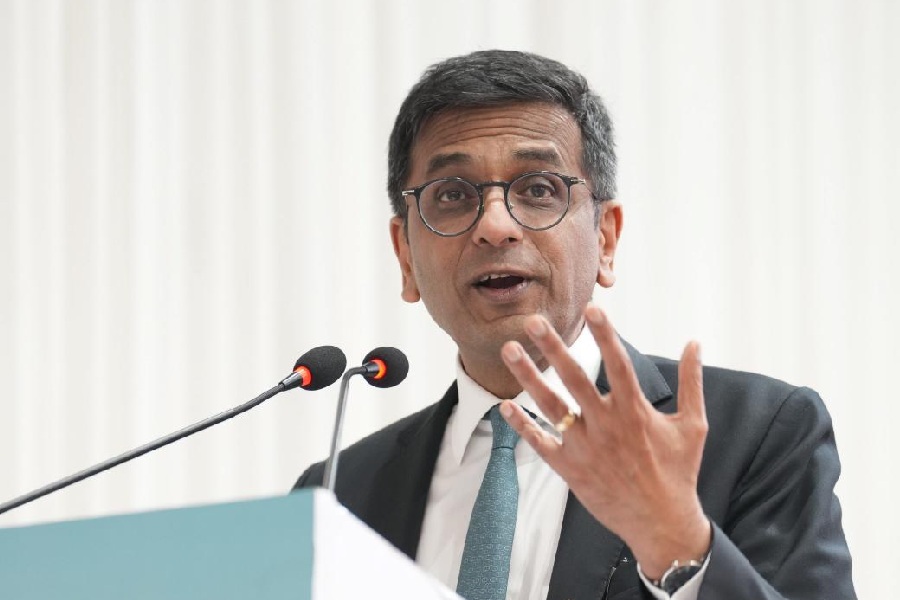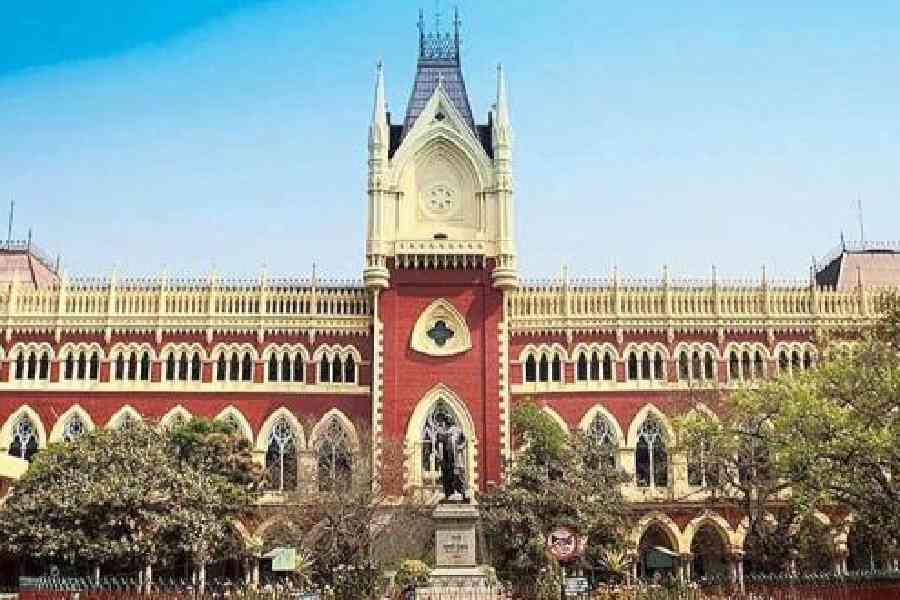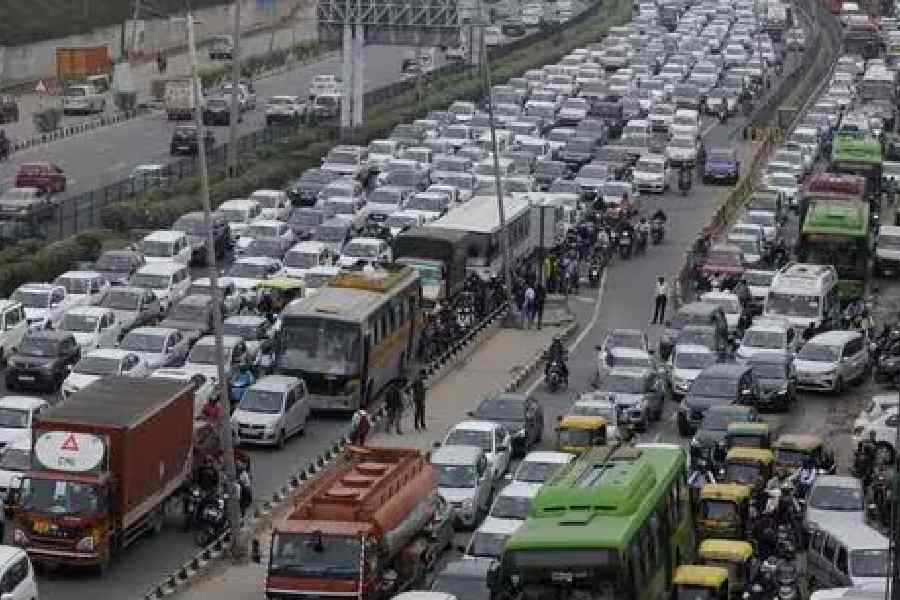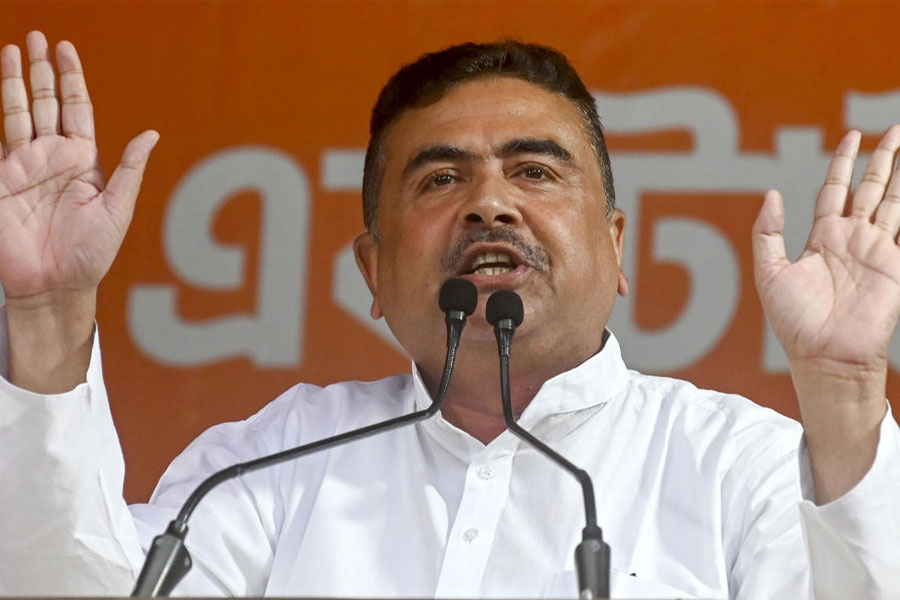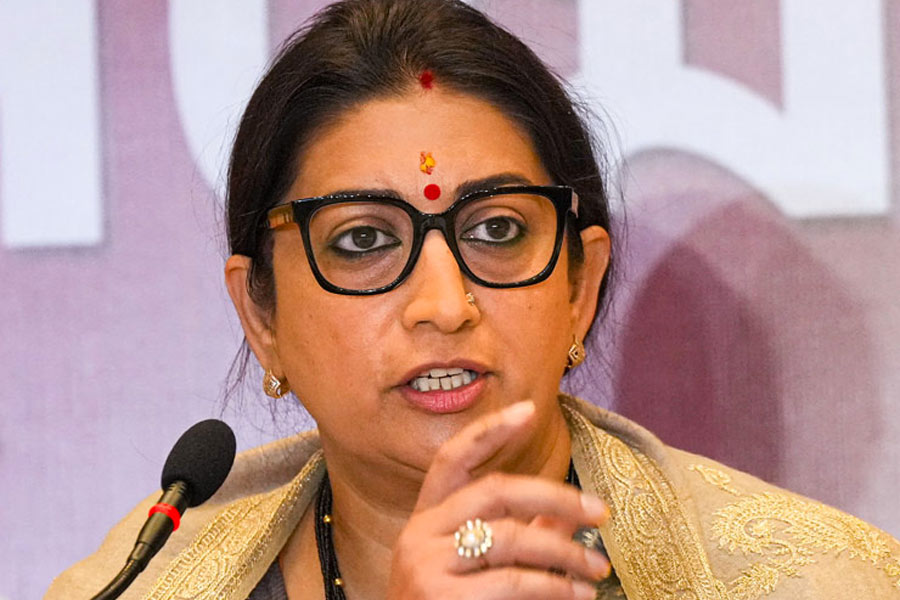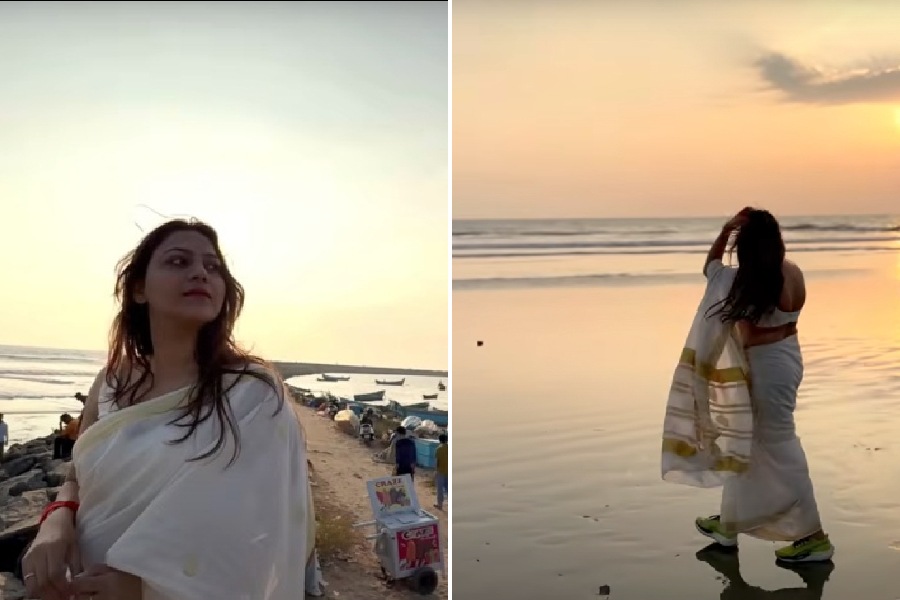 |
| A jawan stands guard at Nandigram’s Tekhali bridge, one of the sites of the March 14, 2007, police firing. File picture |
Nandigram, May 2: The flaming red flowers of a Krishnachura tree near the bridge at Tekhali here is the only reminder that there is another shade of politics in this part of Bengal that is a sea of green.
Nandigram votes tomorrow (Wednesday, May 3) to be recompensed for its agonies.
Tapashi Das is one such face of agony. The mother-of-four who says she is about 30 years in age hobbles with a stick in her cluster of two huts and one pucca room at Adhikaripada, a hamlet some 4km from the black-topped road that goes over the bridge from Nandigram to Khejuri.
The bridge was a border-marker in 2007, between CPM and non-CPM territory, when the killings and the firing and the violations of land and life seared through here and propelled Mamata Banerjee back from the wilderness.
A bullet tore through Tapashi’s thigh on March 14 that year when she was in the frontline of women and children who set out to resist the police and alleged CPM cadres who were entering Nandigram. Today, after months in hospitals in Tamluk and Calcutta, she is still hobbling painfully. Her children have stopped going to school. Living on dole and hope, her husband Shambhu Das is trying to raise funds to take her to a hospital in Vellore, Tamil Nadu, for a surgery.
“The world went around, I do not know what happened,” she recalls. “My husband was not there in that field” — that field is where the bodies of most of the 14 killed that day lay — “I must have fainted”. She was carried to the road where villagers found a car to first take her to Nandigram town. There was no doctor available. The road that goes on from the town towards Contai and Tamluk, where there were larger hospitals, was blocked by the police and the cadres.
“By that time my husband had come. He told them that my waters had broken and I was bleeding heavily — my sari was drenched — and was about to deliver, that is why we were let through the barricades and made it to a hospital,” she says. “Had we said that I had been fired at, they would have just let me haemorrhage”.
Tapashi was a CPM supporter. So was her husband. Indeed, every family in each of 50-or-so households in Adhikaripada were supporters of the CPM for decades. Till, in 2007, the news that the government was going to acquire their land for a chemical complex shocked them. Around the huts where she and her family, including a bent-with-age mother-in-law, lives, is a pond, three coconut trees, a mango tree. They had three bighas that have since been sold to raise money for her treatment.
The rest of Adhikaripada has also gone the Das family’s way. Erstwhile and active supporters of the CPM have gone into the Trinamul Congress fold. They seek justice. The line between a popular cry for justice and the mob mentality of revenge can be fine. It is a line that Bengal will have to tread delicately.
For now, it is village clusters like Adhikaripada that typify the swing in the rural vote. Adhikaripada has gone on to show that it is not fickle in switching its political affiliation. There has been an election every year since 2007 — panchayat, Lok Sabha and municipal, before the current one for the Assembly — and in poll after poll the Left Front has been humiliated.
Across large parts of south Bengal — Howrah, Midnapore, Burdwan, Hooghly — there is little sign of vacillation or neutrality in the rural vote. Neutrality is a luxury that is more affordable in the cities. In the villages, it is more likely that the flag of either party will denote the political affiliation of the neighbourhood, like armies marking out their turf.
Opinion has been formed, decisions have been taken and they appear unshakeable since 2007. Whether it was since Singur-Nandigram, or whether it is the cumulative effect of 34 years of Left rule, or the personal charisma (or otherwise) of the leaders, rural Bengal today is reflecting a character that the Bengali bhadralok is not particularly notable for: being resolute.
Such resolution is born in Nandigram’s villages like Adhikaripada. Why? “For 30 years,” says Shambhu Das, “we propped up the Left, voting for them, campaigning for them, leaving our fields to go to their processions… for what? So that we get this?” and he points to his wife’s walking stick.
Sukumar Das, also of the same village, illustrates with a horrifying story. One evening during the troubled year of 2007, when bombs and bullets were raining down from Khejuri — the CPM-controlled village on the other side of the canal — a scared woman returning from the market lost her way in the dark — there is no electricity here — and ran into a house, seeking refuge.
She is still here, says Sukumar Das. She did not know where she had strayed. The people in the house welcomed her and she identified herself and said whose wife she is — in the villages everyone knows everyone and — asked for shelter. She had no idea that the house was sheltering goons. She was returned on a motor-van three days later, bloodied and brutalised from across the “border”.
“This is what has happened with us,” Sukumar Das says. “We thought they were saviours. We found out that they were here to devour us. That is why we are so resolute. Because we have nowhere to go.”
Villagers in and around Adhikaripada turned to the CPM with gusto in 1977, the year the Left Front was first voted to power. They were promised a great deal, among which was a huge industrial complex at Jellingham for which more than 140 families gave up their land.
Today, Jellingham is a grotesque graveyard ringed by Casuarina trees. Rusted and cannibalised cranes and bulldozers, sheds with torn windows and doors and buildings with most of the walls razed to rubble, huge metal machinery that have now turned into so much junk with jagged edges, make it an eerie location in which murder mysteries are set in.
The Left Front government, with the central public sector Burn Standard Company, had promised to set up units to build oil rigs and fabrication plants and a ship-repairing facility at Jellingham, in Nandigram-I block, where the river is so wide after the merger of the Haldi and the Hooghly that waves lash its shores.
In 30 years, none of the promises came true. But the families that gave up the land are yet to be compensated, though a generation has passed.
Memories of Jellingham were stoked when the CPM’s Lakshman Seth put out a notification to acquire 36,000 acres before withdrawing it in the face of opposition.
The movement snowballed, giving Mamata Banerjee a whole new rhetoric — that was hitherto the Left’s monopoly — and changed the language of politics in Bengal.
Ironically, Mamata, too has promised a re-beginning in Jellingham. In her railway budget this year, she said a wagon-components factory and a “rail industrial park” would be set up in Jellingham. Burn Standard and the Steel Authority of India have signed a joint venture. A 16km railway line that she has gifted to Nandigram will be extended to Jellingham, she has said.
The railway line itself has run into trouble. In January this year, residents of Gholpukur — Trinamul leader Pranab Mahapatra alleges they were mobilised by the CPM — objected to the acquisition of land by the railways. The single-line track would have only one station on the way to Nandigram, at Gholpukur. A procession of the villagers demanding greater compensation and jobs was attacked, allegedly by Trinamul workers.
Mamata intervened and instructed that it should not be allowed to get out of hand. The compensation package was revised to include not only promises of cash and a job per affected family, but also facilities for healthcare and a school. Work on the line has since resumed.
But the risk of over-promise and under-delivery remains. Within its confines, Nandigram cannot help typifying the development-displacement debate that haunts not just Bengal but also much of India.
Over-promise is a vote-catcher. Under-delivery is a grotesque graveyard. Compensation is the palliative.
In between, there are walks in the dark of a Nandigram night from hamlets like Adhikaripada to bridges like Tekhali.


